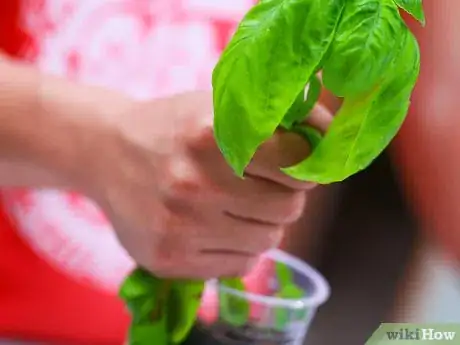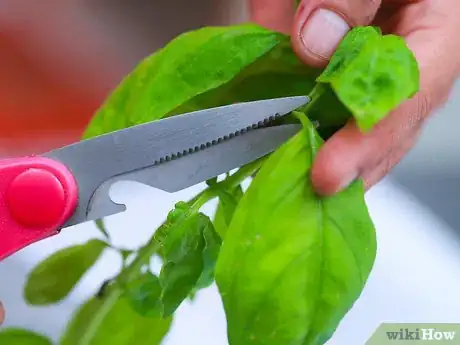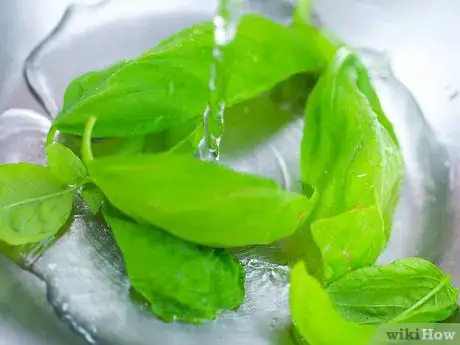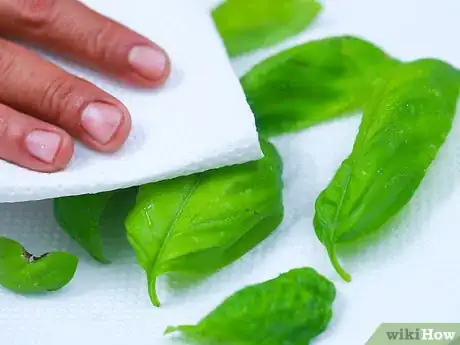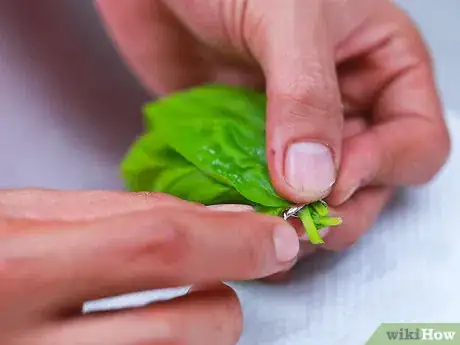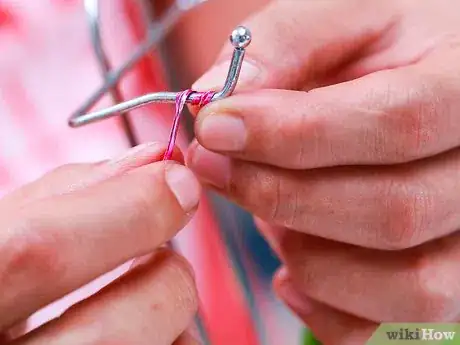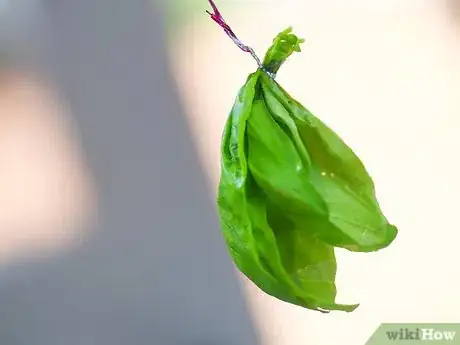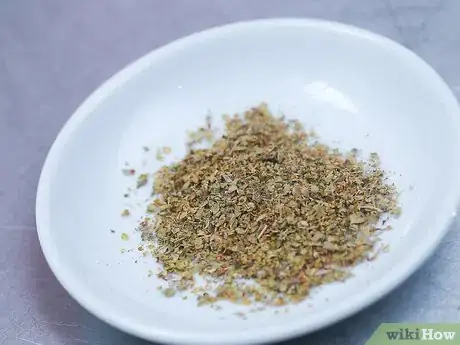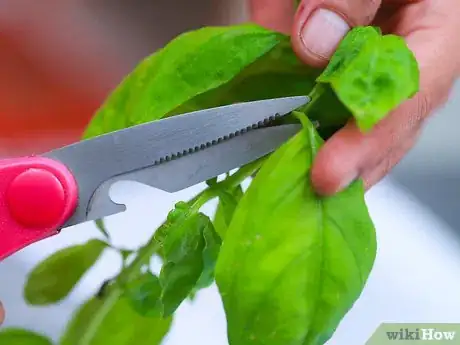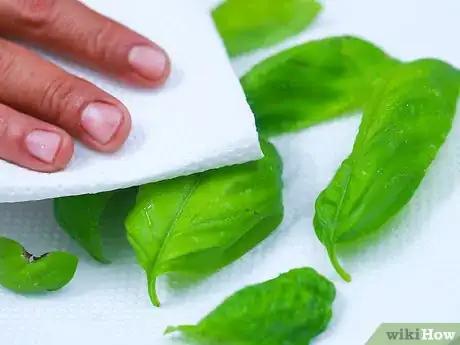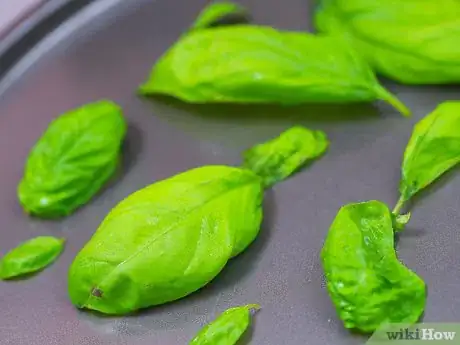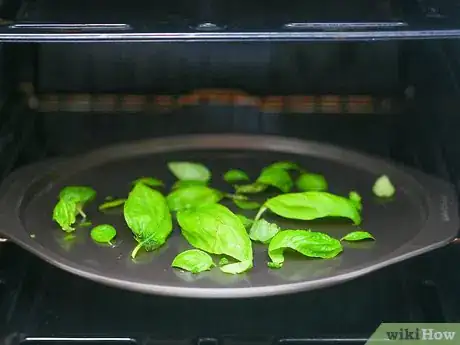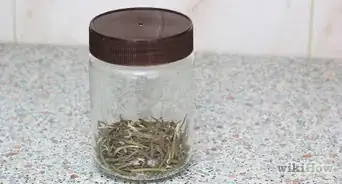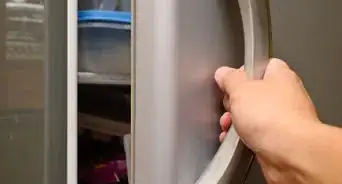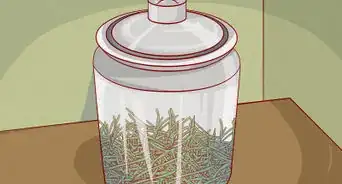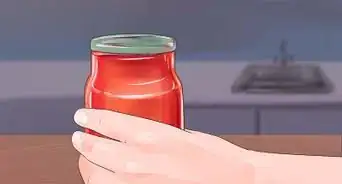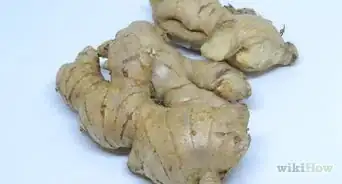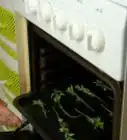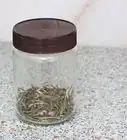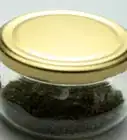This article was co-authored by Artemisia Nursery. Artemisia Nursery is a retail plant nursery in Northeast Los Angeles specializing in California native plants. Artemisia Nursery is a worker-owned small business with plans to become a worker-owned cooperative. In addition to California native plants, Artemisia Nursery offers a selection of succulents, heirloom veggie and herb starts, house plants, pottery, and gardening tools and supplies. Drawing on the knowledge of the founders, Artemisia Nursery also offers consultations, designs, and installations.
wikiHow marks an article as reader-approved once it receives enough positive feedback. This article received 16 testimonials and 88% of readers who voted found it helpful, earning it our reader-approved status.
This article has been viewed 483,471 times.
If you love the flavor of basil, drying your own basil leaves will ensure that you have flavorful herbs to cook with all year long. Basil should be harvested just before it flowers for maximum flavor. The best way to dry basil is by hanging it upside down in a warm, dry place. If you're in a hurry, though, you can dry basil in the oven or a food dehydrator instead.
- Prep time: 2-3 weeks
Steps
Harvesting and Trimming the Basil
-
1Harvest the basil just before it flowers. Basil will flower after all the leaves on one stem are full-grown, but the herb loses some of its flavor after flowering occurs. The flowers appear in the middle of a bunch of leaves in a pyramid shape. Plan to prep and dry basil once all the leaves have sprouted, but before you see flowers on the stems.[1]
- Basil leaves have the most oil just before the plant flowers, so harvesting them at this point will ensure that the dried basil has as much flavor as possible.[2]
- Harvest at mid-morning. This is the best time to harvest because the plant has been watered but the sun has dried the leaves.
- If the plant starts to flower, just follow the stem back to where there are two leaves emerging from a node and cut just above that.
-
2Cut basil leaves from the stems. You want to cut the basil just above the node. Separate bunches of basil leaves and cut the individual leaves from the larger stem. Separating them will help you lay them flat and clean them properly. Leave a small length of stem, no more than an inch, at the bottom of each leaf to help you bundle them and tie them together.Advertisement
-
3Rinse the leaves well. Rinse cut basil leaves under cold water before drying them. This will remove any dirt, chemicals or other debris that may have fallen onto the leaves while growing or while being shipped if your basil is store-bought.[3]
-
4Pat the rinsed leaves dry. Lay the rinsed leaves on a paper towel and gently pat them dry with a second paper towel. Removing excess moisture before drying basil will prevent molding during the drying process.[4]
Hanging the Basil to Dry
-
1Gather the leaves in bunches. Group the prepped leaves in a bundle and tie them together at their stems with a rubber band or twist tie. Make more than one bundle if you have lots of basil leaves.[5]
-
2Hang leaves to dry. Hang your bundles of basil from a hook or wall tack to dry. You don't have to hang them in your kitchen, but make sure you choose a place with freely circulating air and moderate sunlight to aid the drying process. Choose a room with a window that can be opened to let air and sunlight in and preferably one where bugs won't be able to get to your drying herbs.[6]
-
3Let the basil hang for two weeks. Your basil will be dried and ready to use in about two weeks or when the leaves are dark green, dry and brittle to the touch. If the leaves or stems still feel a little flexible, let them hang another week.[7]
- Remove the rubber band or twist tie, separate the dried basil bundle and crumble the dried leaves with your fingers. Store them in a labeled jar or container for future use.
-
4Use the crushed dried basil now in your recipes.
Using Quick Drying Methods
-
1Remove the leaves from the stems after harvesting. If you want to dry the leaves more quickly, you can go ahead and remove the leaves from the stems. Discard the stems along with any leaves that are bruised or broken.[8]
-
2Rinse the leaves and pat them dry. Rinse them gently in water, then set them on paper towels and gently pat them dry.[9]
-
3Prepare your oven or food dehydrator. Basil leaves dry beautifully in either an oven set to very low heat or a food dehydrator.
- If you're using the oven, set it to the lowest temperature - 200 °F (93 °C) or lower.[10]
- If you're using a food dehydrator, ready it for operation according to the manufacturer's instructions.
-
4Spread the leaves on trays in a thin layer. Either spread them on a baking tray or the food dehydrator tray. Make sure none of the leaves overlap. They should be arranged in one thin, even layer.[11]
-
5Dry the leaves to the correct moisture content. The leaves should be dried over the course of 24-48 hours until they are no longer moist; they should crumble easily when pinched between your fingers.
- If you're using the oven, place the tray of leaves inside the preheated oven and let them bake for 20 minutes. Turn off the oven and leave the leaves inside overnight. In the morning, they should be sufficiently dry.[12]
- If you're using the food dehydrator, place the tray of leaves inside and operate the food dehydrator for 24-48 hours.
-
6Store the dried leaves. You can store them whole in plastic food storage bags or bins, or crush them and store them in spice bottles.
Community Q&A
-
QuestionCan I hang them with the basil on the stem instead the little bunches
 Community AnswerYes, but it will take about four weeks to dry.
Community AnswerYes, but it will take about four weeks to dry. -
QuestionCan I still cut the basil after the flower has appeared?
 Community AnswerYes! But after the plant has flowered it is likely to have a much stronger flavor and smell, so you won't need to use as much. Some people prefer it once it has flowered and some do not like it at all, it's really a matter of preference.
Community AnswerYes! But after the plant has flowered it is likely to have a much stronger flavor and smell, so you won't need to use as much. Some people prefer it once it has flowered and some do not like it at all, it's really a matter of preference. -
QuestionWhat are the uses for basil leaves?
 Community AnswerOne way to use basil is to snip and wash one leaf and drop it into bottled water at night. By morning, the water is infused with a light and refreshing taste.
Community AnswerOne way to use basil is to snip and wash one leaf and drop it into bottled water at night. By morning, the water is infused with a light and refreshing taste.
Things You'll Need
- Cold water
- Scissors or gardening shears
- Paper towels
- Rubber bands or twist ties
- Hook or wall tack
- Oven or food dehydrator (optional)
References
- ↑ https://www.todayshomeowner.com/how-to-harvest-and-use-fresh-basil-from-your-garden/
- ↑ http://www.pickyourown.org/DHbasilmint.htm
- ↑ https://passthepistil.com/how-to-harvest-basil/
- ↑ https://thecookful.com/store-dry-basil/
- ↑ https://thecookful.com/store-dry-basil/
- ↑ https://momwithaprep.com/how-to-dry-basil/
- ↑ https://momwithaprep.com/how-to-dry-basil/
- ↑ https://momwithaprep.com/how-to-dry-basil/
- ↑ https://momwithaprep.com/how-to-dry-basil/
About This Article
Before you can dry basil, harvest it when all the leave have sprouted but before you see flowers on the stems. Cut the basil leaves from the larger stems and rinse them well. Next, preheat your oven to 200 degrees Fahrenheit and arrange your basil leaves in a thin layer on a baking sheet. Place the tray in the preheated oven for 20 minutes, then turn the oven off and allow the basil leaves to remain in the oven overnight. By morning, the leaves should crumble when pinched. For a slow drying method, keep reading!
